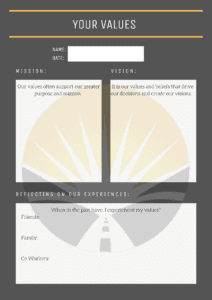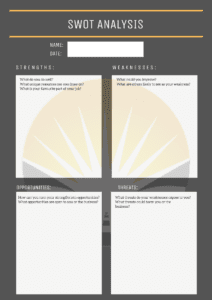Whether you’re overseeing the adoption of a new platform or conducting a full-scale merger, effective change management will be critical to the success or failure of the project. A few years ago, Jonathan Clark and I assisted in the implementation of a large-scale Information Technology (IT) project. This project influenced almost all aspects of the broader organization’s finance, sub-projects, customer data, product information, operations, manufacturing capabilities, retail centers, and more. Prior to this project, we were involved in numerous technology-based projects within the Military, as both deliverers and users. Our experiences have uncovered a number of significant recurring themes and lessons which we wanted to take the opportunity to share with those who had the time to listen.
Effective Change Management Is Not An Afterthought
Change management is not a joke. It is not the responsibility of a single agency or individual to promote change within an organization. It requires significant investment and analysis at all levels of an organization. For effective change management on a large scale, you need to provide leadership, champions, preparation, and context. We have seen many instances of organizations that want to implement a change but are not willing to invest anything in order to achieve it. Worse yet, no one understands why the change is necessary or how it will occur.
Related Reading: Myths of Change Management (VIDEO)
Change within organizations too often starts with the word just. We’re just replacing capability A with B. We just want to absorb another organization. We just need to transition Team A into Role D.
There is no “just” when it comes to effective change management. That type of approach all but guarantees a waste of money, time, and resources, up to and including a full regression or undoing of the change efforts. Depending on the scale of the effort, it could literally destroy an organization.
Systems And Technology Alone Will Not Save You
During our years as change management consultants, we have observed an overreliance on technology. It is a common misconception that new digital systems will fix poor processes. But they never have, and they never will. There is no doubt that technology can enhance an organization’s productivity, capabilities, and efficiencies. But part of effective change management is making sure you have the right people to implement and align the technology to a strategic direction. If those people do not understand the strategic direction of the company, the technology they implement may only send you further off course.
Related Reading: How NOT To Collect Data for Business
In many instances, organizations will implement a new platform or technology because they want to appear innovative and modern. But changing a system comes at a cost in time as well as money. Before you decide to implement a new system, make sure you determine the specific issue this change is going to address and the projected return on investment. It also may be worth considering non-technological alternatives. You will have no hope of effective change management if you’re trying to solve a process- or people-based issue by trying to cover it up with a computer program.
Leadership Is Not A Scary Word
You can change software interfaces and technologies, but unless you have user buy-in and ownership, you will have a fight on your hands every step of the way. If there is no leadership to explain the context, facilitate the time for acceptance, or provide a buffer for mistakes, then users will never see the need to make it work.
The Eighth Mile has had the privilege of working with some truly amazing leaders across multiple industries including military, government, and commercial enterprises. We often hear blasé comments about the differences between leadership and management, but when we ask people if they consider themselves to be a leader, they balk at the last minute and describe themselves as a good manager. Do not do that. If you want to be a leader, then be one. Do not shy away from the responsibilities associated with it. It is a role that offers the privilege of providing a purpose to those around you, sometimes through effective change management, and sometimes simply by working with them to achieve your objectives.
Change Is Inevitable
“Change is inevitable; Progress is a choice”
Dean Lindsay
Organizations will experience change, either voluntarily or due to the environments they operate in. A business that doesn’t change or evolve with its industry will eventually be left behind. As a result of this many businesses, appear to make reactive and impulsive changes instead of deliberate changes that propel them forward. A lack of careful planning and evaluation can increase costs. Many times, these same organizations don’t align their goals with realistic and achievable timelines, opting instead to rush the change and hope for the best.
For the most effective change management, our experiences at The Eighth Mile prompt us to suggest the following guidelines:
- Determine the direction of the organization. Any change you make must align with your overall strategy, mission, and goals.
- Analyze the problem you are trying to fix. How many ways can you think of to solve it?
- Analyze what is not required to change. This will prevent enacting unnecessary efforts that will only drain your resources.
- Once a decision is made, communicate the information early and openly to your staff
- Champion the decision and enforce leadership at all levels.
- Plan and sequence the change
- Enact the change
- Provide ongoing support to ensure success.
Truly effective change management provides a host of benefits, including lower resource costs and higher employee satisfaction, to say nothing of resolving the core issue that necessitated the change in the first place. The risk of getting it wrong, however, can be monumental. Large-scale changes, especially when it comes to implementing new technology, will not work without support from all levels within an organization. Do not assume the problem will go away with wishful thinking. Some change are necessary, and you must manage them effectively if you want your organization to not only survive but excel.
Nervous about effective change management? The Eighth Mile can help. We provide full-service change management consulting and guidance for organizations across multiple industries. Visit our Change Management Services page to find out more, or contact us directly to speak with our consultants.




